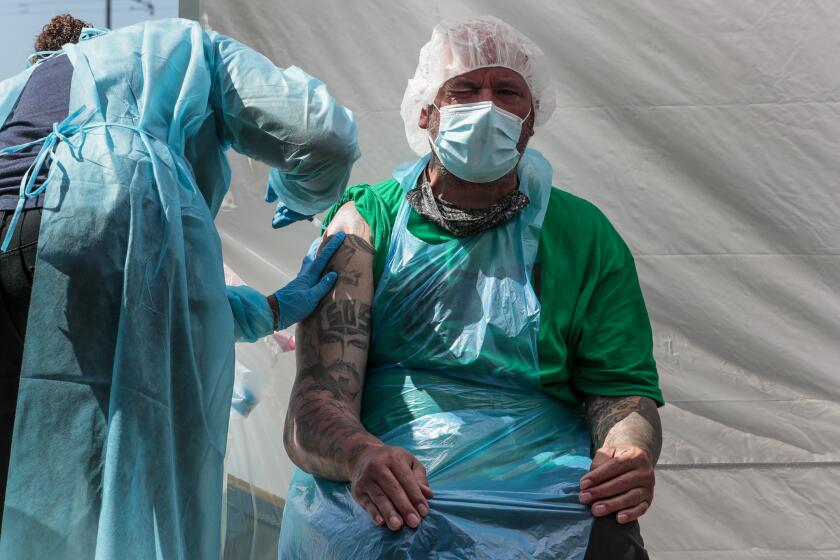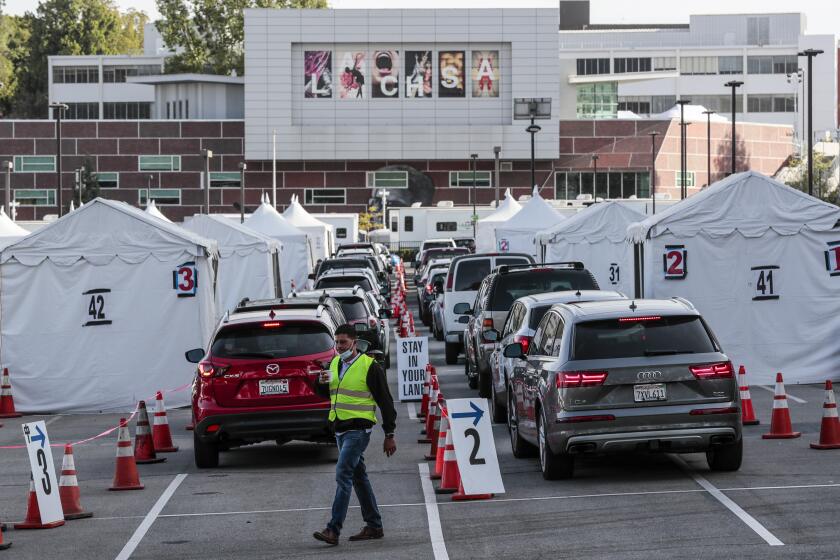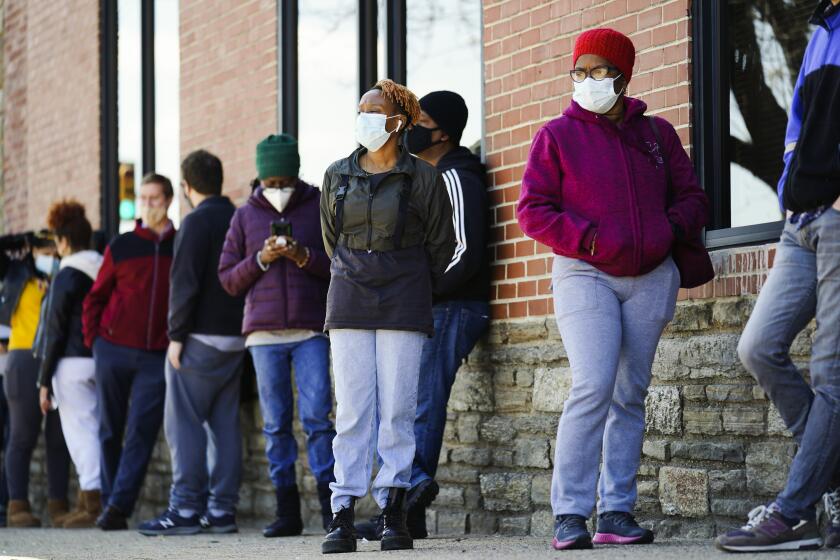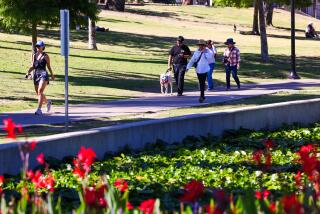South African and Brazilian coronavirus variants land in L.A.
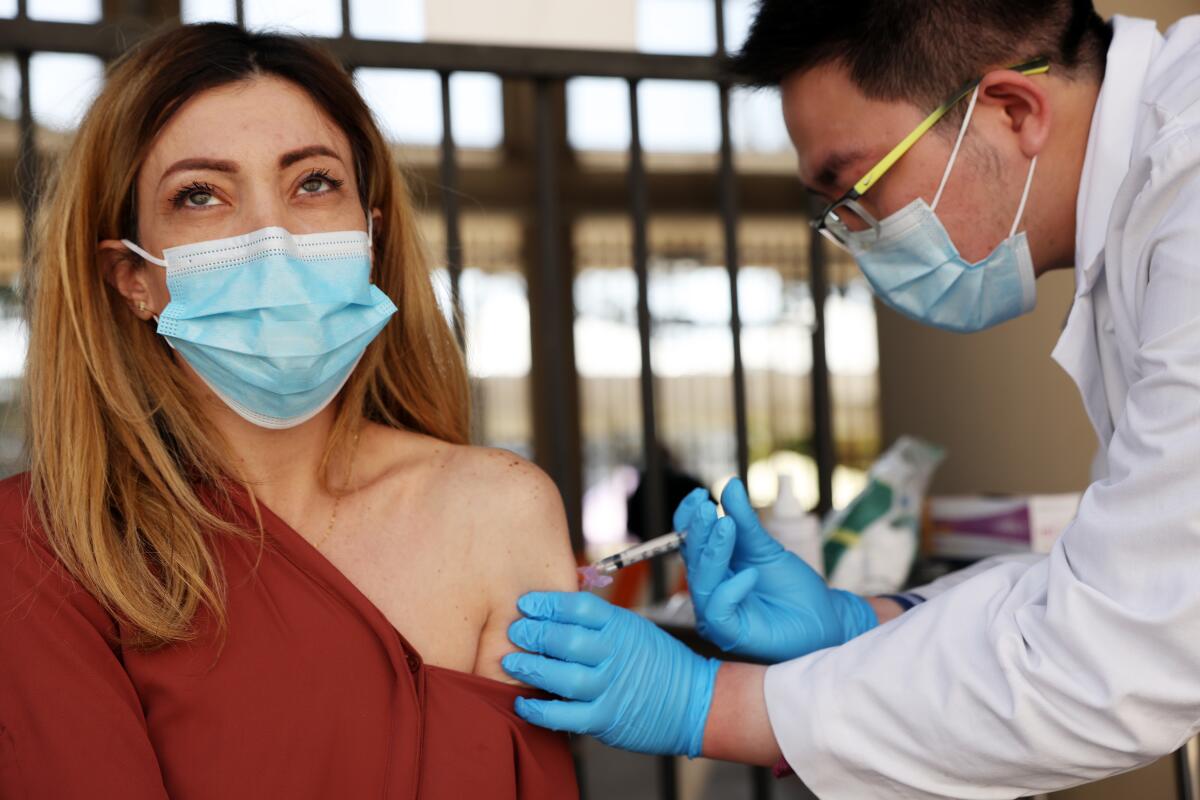
Two coronavirus variants thought to be more transmissible or resistant to vaccines than their predecessors have been found in Los Angeles County for the first time, a discovery health officials said should reinforce the importance of taking steps to thwart transmission of the virus.
Through specimen analysis in the last week, local public health officials identified one case of B.1.351, also referred to as the South African variant, and three cases of P.1, a mutation first identified in Brazil.
Both are among the five “variants of concern” identified by the U.S. Centers for Disease Control and Prevention.
“Although these are the first reported cases of the South Africa and Brazil variant in L.A. County, it is likely there are additional undetected and undiagnosed cases, because ... very few of our specimens actually undergo this kind of sequencing to determine the variant type,” Public Health Director Barbara Ferrer said Wednesday.
The existence of a coronavirus variant containing two worrisome mutations, first discovered in India two weeks ago, is confirmed in California.
Nevertheless, she said “the identification of these variants highlights the need for L.A. County residents to continue to do everything we can to take measures to protect ourselves and others.”
“This includes wearing a mask, maintaining at least six feet of distance from others who aren’t in our household, and getting the COVID-19 vaccine as soon as it’s made available,” she said.
Statewide, 37 cases of the P.1 variant and 14 cases of B.1.351 have been identified to date, according to data from the California Department of Public Health.
Of the 70 total specimens recently tested in L.A. County’s public health laboratory, 42 were found to be another concerning variant — B.1.1.7, from the United Kingdom. An additional 13 were the California variant, known to scientists as B.1.427/B.1.429.
“While the specimens sequenced are not randomly selected, increases in the percent of variants identified most probably correlates with increased circulation of the known variants,” Ferrer said.
Two COVID-19 vaccines are likely to be protective against a rapidly spreading variant of the SARS-Cov-2 virus that arose in California, a study finds.
The U.K. variant is particularly worrisome, as it’s thought to be as much as 50% more transmissible than others that are widely circulating, and there’s some evidence to suggest it’s also more likely to cause severe disease or death.
Based on federal estimates, B.1.1.7 is now the most common coronavirus strain circulating nationwide, according to CDC Director Dr. Rochelle Walensky.
“The virus still has [a] hold on us — infecting people and putting them in harm’s way — and we need to remain vigilant,” she said during a briefing Wednesday. “And, two, we need to continue to accelerate our vaccination efforts and to take the individual responsibility to get vaccinated when we can. We have to recognize the high risk of infection in areas of high community transmission. I encourage communities to consider adjustments to meet their unique needs and circumstances.”
After briefly allowing all adults to line up for COVID-19 shots, Cal State L.A. returns to requiring appointments.
Many officials are now characterizing the nationwide struggle against COVID-19 as a race between vaccines and variants — with rapid, widespread inoculation key not only to eventually ending the pandemic, but reducing the spread of the virus and eliminating its opportunities to mutate further in the near term.
“We still need to have our case counts be really low to stop circulating [the] virus, to stop the emergence of variants, to stop hospitalizations and, ultimately, to stop deaths,” Walensky said.
But there are warning signs.
After a steep and steady decline following the fall-and-winter surge, the U.S. has seen an increase in new coronavirus infections.
The latest nationwide seven-day average for reported cases was 63,407, a 13% increase from two weeks ago, CDC data show.
Those increases aren’t uniform, though. While some states in New England and the Midwest are grappling with distressingly high case rates, others — including California — are seeing rates remain relatively low.
According to the CDC, California’s latest seven-day new case rate of 44 per 100,000 people per day is the third-lowest among all states and significantly below the nationwide rate of 133.7.
The heavy concentration of new coronavirus cases in just five states is putting pressure on the government to consider adjusting vaccine distribution.
Dr. Anthony Fauci, the U.S. government’s top infectious disease expert, said the nationwide case count has “plateaued at a disturbingly high level.”
“When you’re at that level, there is the risk of getting a surge back up,” he told CNN during an interview Wednesday. “So the way we’re looking at it now, it’s almost a race between getting people vaccinated and this surge that seems to want to increase and do what’s going on, for example, in Europe where they’re having some surges now that are really quite alarming.”
However, the number of people dying from COVID-19 is continuing to decline nationwide.
Also promising is the pace of the vaccine rollout. Nationwide, 33.1% of all Americans have received at least one vaccine dose to date, and 19.4% are fully vaccinated, CDC data show.
“We’re vaccinating, now, between three and four million people per day,” Fauci said.
But, as he noted, many more people still have yet to roll up their sleeves, so Americans need to “hang in there a bit longer.”
“Now’s not the time, as I’ve said so many times, to declare victory prematurely,” he said. “We still have a considerable risk there that we need to get by.”
More to Read
Sign up for Essential California
The most important California stories and recommendations in your inbox every morning.
You may occasionally receive promotional content from the Los Angeles Times.
